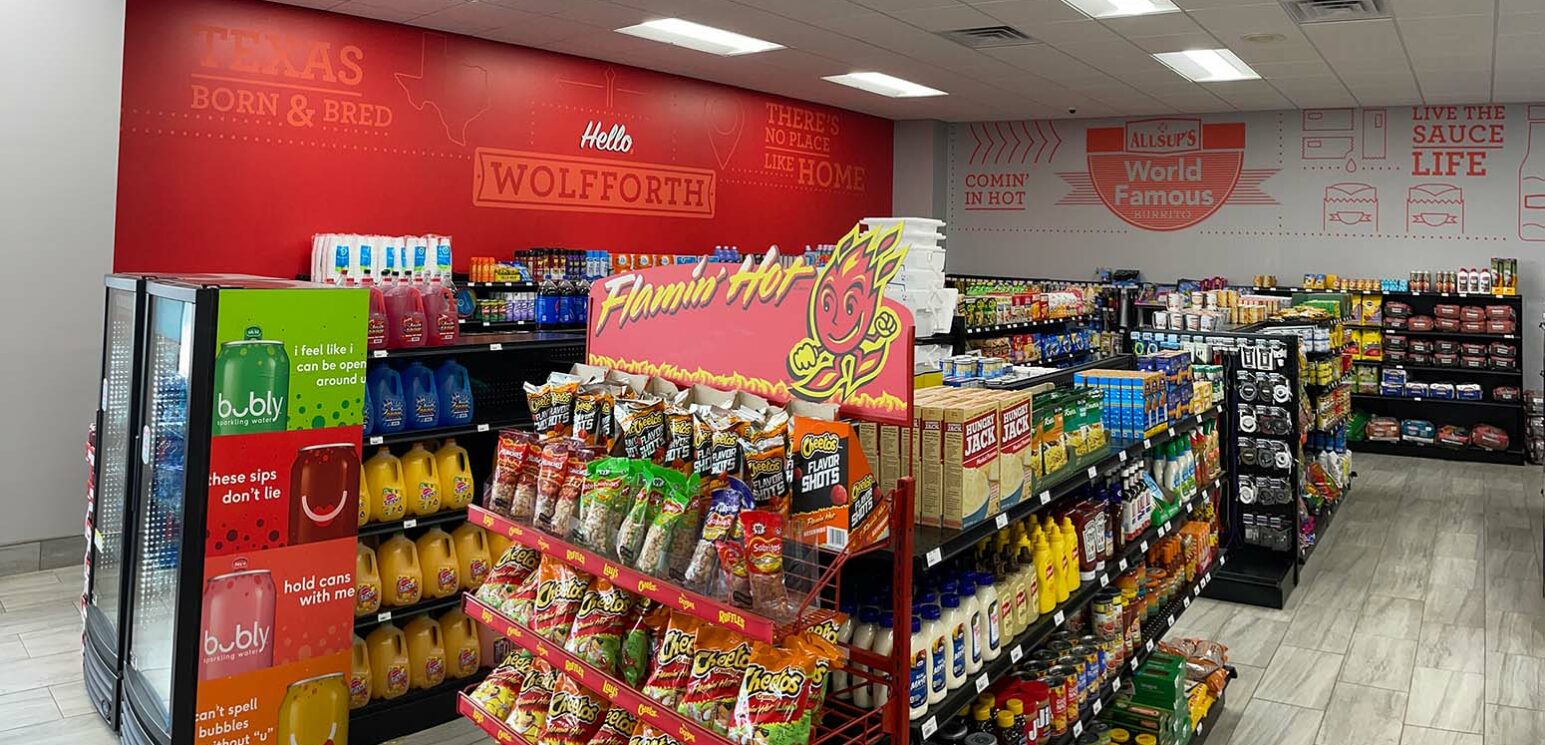The evolution of the convenience store—known as c-stores in industry jargon—is fascinating. While my doctoral research was about the supermarket industry, I was equally fascinated by their cousin. How they have changed through the years is truly mind-boggling.
The first c-store was opened in the Oak Cliff neighborhood of Dallas by the Southland Ice Company in 1927. Back then, they were known as Tote’m stores, and ice was a primary product before the widespread adoption of electric refrigerators. It wasn’t until 1946 that the rapidly growing chain changed its name to 7-Eleven, to reflect its hours of operation.

Early c-stores were typically 1000-1200 square feet, about the size of a house back then. Gasoline didn’t become a popular auxiliary product line until the 1970s. Today, of course, we go to c-stores primarily for gas, and then maybe we walk inside. Oh, and if we buy ice, it’s usually because we need it to put in the cooler. As for the gas, it is a reflection of our car culture. We don’t walk to any stores these days.
And those tiny stores have been replaced by shiny new structures that average 3500 square feet, with some—notably Buc-ee’s—much, much larger. The depth and breadth of c-store merchandise has expanded greatly, far beyond the usual milk, bread, and other staples that once lined shelves. Today there’s a candy store inside, an endless array of snacks, and every possible kind of liquid refreshment. One more thing: Prepared foods. Go to a newer Wawa, QT, Casey’s, and others, and you’ll be able to get lunch or dinner along with a tankful of gas.
Full disclosure: I wrote a feature story about Amarillo’s Toot’n Totum c-store chain for the May-June issue of Brick & Elm Magazine, so I have been knee deep in c-store facts and figures. I was enjoying it so much I decided to share some of it here. The chain started here in 1950, its name a slight dig at the early 7-Eleven stores, as well as a reference to customers tooting their horn when they arrived, and a clerk toting their order out to them.
There are 152,000 c-stores today in the US, and there is rampant consolidation and growth among the biggest chains. Circle K, QT, Casey’s, and Wawa are among those entering new markets, buying up regional chains, building new stores, or both. Some offer car washes and auto care centers as well, making their physical footprint about three acres once you include all of the concrete areas for parking, gas, ingress, and egress.
Makes that first Tote’m Store look even smaller, doesn’t it?
C-stores have always enjoyed higher margins compared to supermarkets, primarily because they just could. Convenience comes with a price, and people are willing to pay it if they are in a hurry.
And therein lies the most important part of c-store evolution: Our increasingly hectic lives—something I have been both observing and bemoaning for several decades now—find us looking for the path of least resistance. If we can combine stops, we’ll do it. Think gas, lunch, and a loaf of bread. C-stores also outgrew the rhyming hours of operation, remaining open 24 hours a day in many locations.

But it is not like c-stores are putting the screws to traditional supermarkets. There are nearly 79,000 supermarkets in the US, with the number continuing to grow slowly. Sure, our population has grown more than 100% since the 1950sl, meaning we simply need more food available everywhere.
Locally, much of Toot’n Totum’s growth occurred by acquisition, a strategy it used in the 1960s through 1990s. Often, all that needed to be changed was the sign. Still, all of its stores were within Amarillo. Toot’n Totum continues to grow today, having shed its Amarillo-only strategy in 2013 when it purchased a small chain scattered across the northern Panhandle. They then set up shop in Liberal Kansas, Boise City Oklahoma, Clayton New Mexico, and right here in Canyon. In 2022 they announced they would build—not acquire—20 new stores in Lubbock, their first major expansion into a new market. The company plans to keep growing where opportunities exist, with their 100th store on Amarillo’s north side set to open this fall.
As c-stores continue to rise to the wants and needs of customers, there are numerous trends afoot, some of which you may have already noticed. Don’t be surprised when you find EV charging stations, self-check kiosks, even more beverages (how can they possibly offer more?), healthier fare, and what Toot’n Totum says is the secret sauce in their success story, an emphasis on the customer experience.
This means safe shopping, clean restrooms, bright lights, loyalty programs, mobile apps, and merchandise variety. Sure, some chains fail miserably on some or all of these measures, but they will be the ones to struggle as competition heats up.
Meanwhile, my fascination with c-stores continues unabated. I see consumer behavior happening here. And as I learned in my interview with Toot’n Totum’s VP of Marketing, they are digitizing more and more of the customer experience. It’s a far cry from when I started studying all of this more than 40 years ago, but it never fails to get my attention.
Darwin’s evolution of species could never keep up with what we’re seeing today.
Dr “C Is For Convenience” Gerlich


